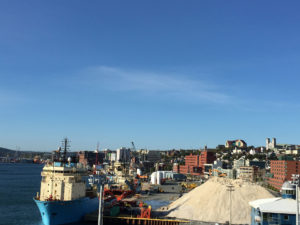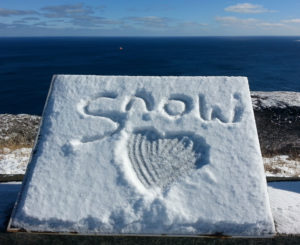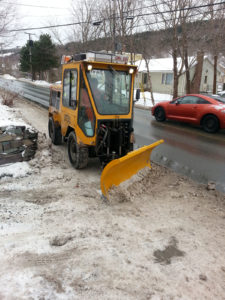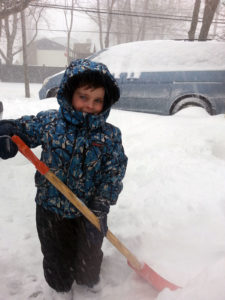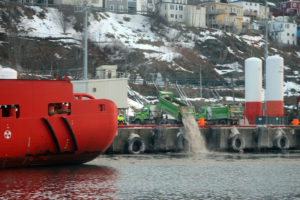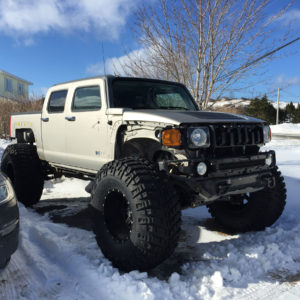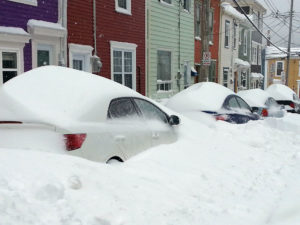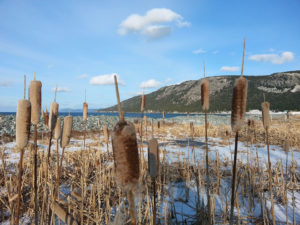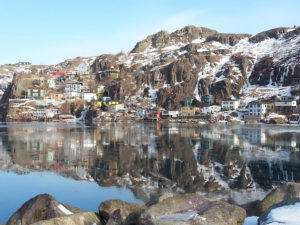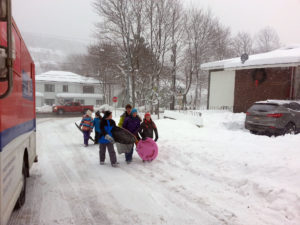Ironically, one of the most frequently asked questions by summer tourists is how we manage to navigate the streets of St. John’s during the winter months. In fairness, even on the hottest day of July, this must seem like a legitimate concern when you consider the steep inclines in the down town core, how narrow the streets appear even without snowbanks, people’s misconceptions about Newfoundland weather, and of course, the mountain of road salt that grows with every dockside delivery throughout the summer.
As is often the case in Newfoundland, we don’t spend much time dwelling over what we can’t control and therefore dismiss such “concerns” with a wave of our hand and some flippant comment about driving slowly, and yet another reason for needing an extra half hour in our time zone. However, now that winter is upon us it seems an appropriate time to provide a proper explanation, especially given my experiences in other North American cities where even the slightest accumulation can grind traffic to a complete standstill.
First and foremost, you must understand that despite our ranking as the snowiest city in North America, and the 4thsnowiest city in the world, very little of the white stuff actually accumulates in St. John’s. Sounds crazy I know but that’s just the way it is around here.
St. John’s could arguably be described as the nose of North America. And for some, that nose is stuck in the worst place imaginable, the exact point where two of the world’s most extremely polarized ocean currents converge. This is where the icy cold waters of the ‘Labrador Current’ crash headlong into the tepid waters of the ‘Gulf Stream’, creating some of the world’s greatest fishing grounds, and some of the most unusual weather patterns imaginable.
Thus, a north east wind will soak all the moisture off the cold Atlantic waters before it comes pounding over the White Hills on the city’s back side, dropping 5, 10, 25, and sometimes as much as 60 cms in a single storm. The thing is though, once a system has completely exhausted itself, the change in air pressure draws warm wind from the Gulf Stream and the snow begins to melt immediately. In fact, our biggest snow clearing challenge is timing the end of a storm so we can start shovelling before the light stuff turns wet, heavy and sloppy. Or worse, reverts back to cold and freezes in solid.
From city council’s perspective, the second our skies threaten any form of winter precipitation the sanders and plow trucks are out in force laying a heavy coating of salt and grit that will hopefully mitigate the situation. Considering that most snow days result in less than 5cm of accumulation, this is usually an effective measure of prevention that also creates the ideal environment to practice our winter driving techniques. However, on those ten days when the snow fall amounts to more than 11 cm, the plows stick to the main through ways, hospitals, fire and police stations, with an occasional sweep of the side streets to help keep them somewhat passable until a proper clean up can be unleashed. And lets not kid ourselves, we’re not driving anywhere under those circumstances.
Needless to say, anyone who commutes during our winter season installs good snow tires, gets lots of practice in slippery conditions, sports a good ice scraper, learns what hills to avoid, develops nerves of steel, and of course, revels in those extended spring like windows that can see temperatures rise well above freezing for weeks at a time.
As the expression goes, “We don’t tan in Newfoundland, we rust!”

